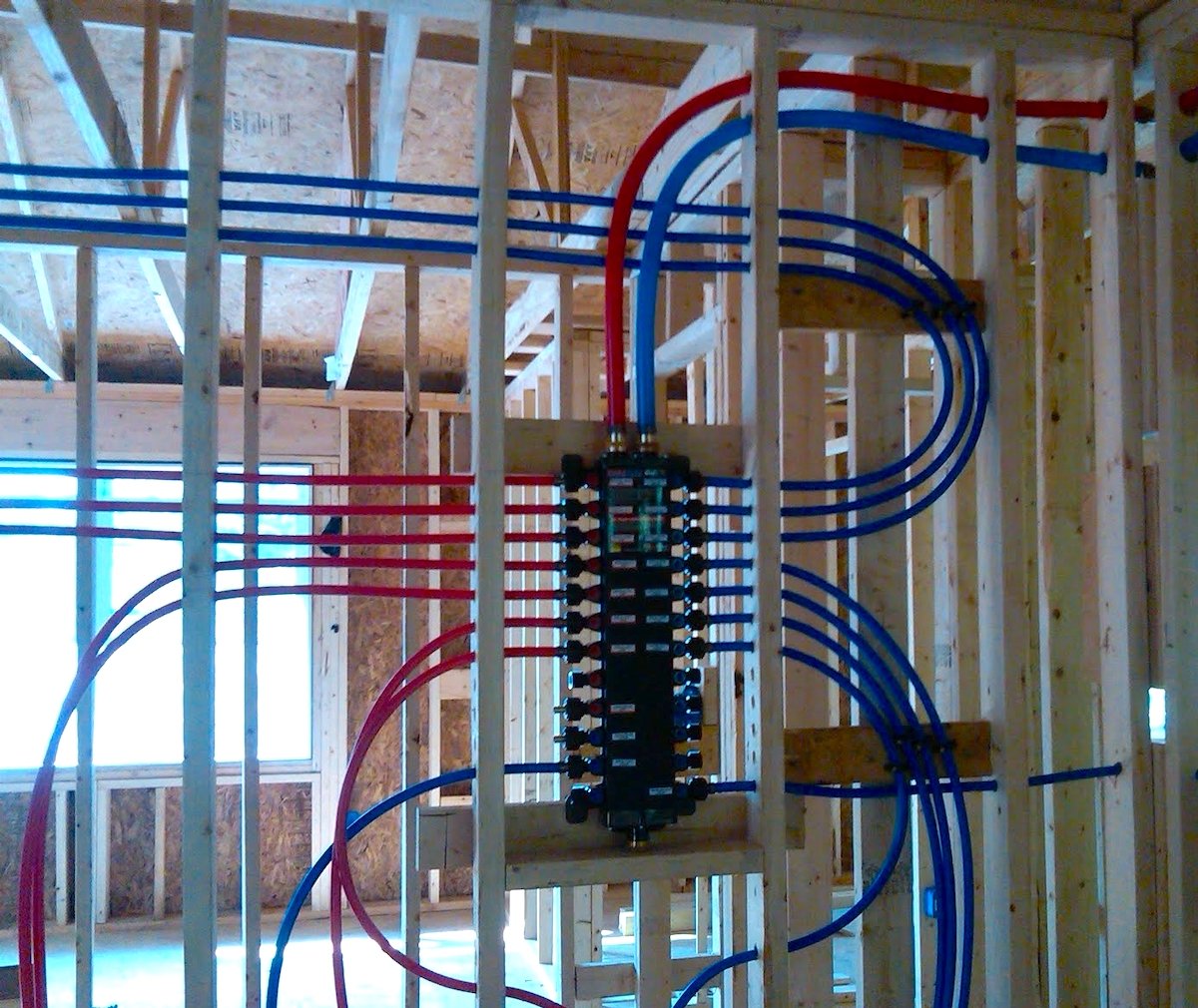1 min read
Riding the Renovation Rollercoaster: The Emotions Behind a Remodel
Every home remodeling journey comes with its own set of emotions, and no project is without its ups and downs. After remodeling homes in the greater...
3 min read
Meadowlark Design+Build : January 6, 2025

As homebuilders, we know that there’s no singular solution proven to work best for every house. Instead, all building materials, technologies, and methods have their array of advantages and disadvantages — and a variety of situational factors go into determining which ones are right for a specific home.
Water supply line materials are no exception to this. While copper plumbing used to be the top choice in this category, cross-linked polyethylene (PEX) is starting to give it a run for its money. But when varying regions have different climates, soil conditioner, and water chemistry, either one of them could be the best choice. It’s all about deciding which is right for your home, given the location it’s in.
Below, let’s discuss the differences in copper vs. PEX plumbing supplies, so you can decide which one may be right for your home.
First, let’s talk about copper plumbing. Copper itself is a soft, yet durable material, which provides justification for why it’s long been a popular choice for plumbing applications.
Copper plumbing has the following advantages:
Quick installation - It can be installed relatively quickly due to its high usage volume.
Bacteriostatic - Bacteria won’t grow inside the pipes.
Corrosion-resistant - Under most environmental conditions, copper plumbing won’t rust or degrade.
Unreactive - Copper doesn’t react with chlorine, fluorine, or other water contents.
High water quality - If your water has sufficient (but not too much) mineral content, you can effectively line copper piping with a mineral layer to keep water quality high.
Recyclable - Copper is a metal that’s fully recyclable.
However, copper plumbing also has some serious disadvantages, including:
Low tensile strength - Copper pipes can easily burst if water freezes within them.
Low tolerance for acidity - If your water is too acidic, it will corrode copper piping over time. This can cause problems like human and aquatic animal health hazards, as well as lowered structural integrity of piping.
Environmental damage - Copper mining causes extensive environmental damage in several areas of the world.
Expensive - Raw copper material is expensive and prone to large price fluctuations.
Less compatible with manifold systems - Copper is harder to plumb with a water-saving manifold system.
Increased chance of mineral build-ups - Hard water can cause minerals to build up over time, restricting water flow.
High water turbulence - Water doesn’t flow as smoothly in copper pipes, causing more water use.
Thermally conductive - Hot water loses heat quickly in copper piping
PEX plumbing is a type of plastic tubing made from high-density polyethylene. Apart from being the newest player in the water supply line game, PEX is also used for radiant floor heating tubing.
PEX plumbing has many advantages, including:
Affordable - PEX is manufactured with far less expensive raw materials than copper.
Sustainable - PEX has a low carbon footprint, in terms of sourcing and production.
Acid-resistant - Unlike copper, PEX can withstand acidic water.
No mineral build-ups - Mineral scaling will not build up in PEX piping.
Less water turbulence - PEX creates far less water turbulence which means the water flows more efficiently through the PEX pipe. The result is less water can actually provide the same amount of water pressure at the end use.
Compatible with manifold systems - PEX’s flexibility makes it the ideal piping solution for manifold water distribution systems.
Not thermally conductive - Hot water remains hot in PEX piping for extended periods of time.
But PEX piping isn’t perfect. It does have a few disadvantages, such as:
Possible installation upcharges - Some plumbers may charge more for installing PEX piping due to their unfamiliarity with it.
Reactive - PEX can react with chlorinated water to make toxic chemicals at extremely low levels.
Not recyclable - Although PEX is more sustainable in terms of sourcing and production, it cannot currently be recycled.
Not resistant to ultraviolet light - If exposed to ultraviolet light, PEX piping will degrade rapidly.
As mentioned before, there isn’t a particularly “right” answer for every home. However, you may be able to use those pros and cons lists to narrow down which one would suit your home best, given the location and environment that it’s in. Here’s our best advice:
When choosing between copper and PEX plumbing, it all comes down to where you live. We recommend testing your water before choosing an option. If your water has a pH value below 6.5, it’s generally too acidic to use copper piping. Beyond the results of that water test, the decision depends on what goals you have for your home and the technologies within them — whether they be energy efficiency, long-term durability, etc.
If you’re struggling with the choice between copper vs. PEX plumbing for your home, Meadowlark Design+Build can help! Our designers and builders have extensive experience helping families find and install the solutions that will bring the most benefit to them. Give us a call or contact our team online to learn more about the green building technologies we offer.

1 min read
Every home remodeling journey comes with its own set of emotions, and no project is without its ups and downs. After remodeling homes in the greater...

Transforming your home is not just about aesthetics; it's about finding solutions that fit your budget and lifestyle. When upgrading your kitchen or...

We’re thrilled to be featured in The Scout’s Guide’s latest piece, “How to Upgrade Your Basement, According to the Experts.” We invite you to check...